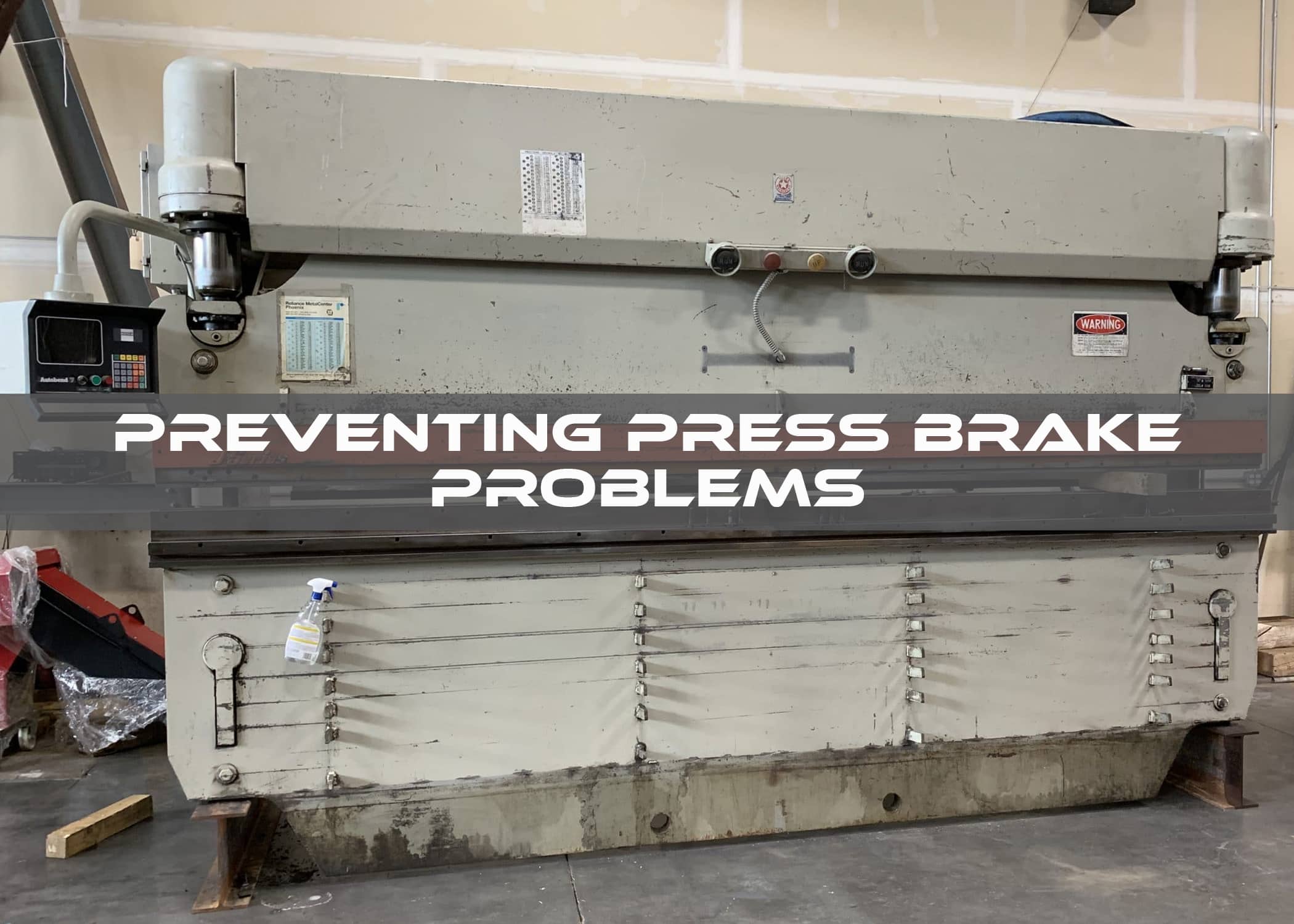To keep their machines performing at their peak, owners and operators need to take a proactive approach to preventing press brake problems before they can develop. Doing so will not only likely preclude the loss of time and money down the road but may well ensure the safety of operators and bystanders.
To avoid common issues with your brake, some key areas to focus on include:
- Safety. Always prioritize safety. Check that all safety devices and guards are functioning correctly and in place. Operators should wear appropriate personal protective equipment (PPE) and follow safety guidelines, such as not bypassing safety interlocks.
- Operators. Confirm that your press brake operators are well-trained and knowledgeable about the machine’s operation. They should be familiar with emergency shutdown procedures and how to respond in case of a malfunction or safety issue. Operators should remain focused and avoid distractions while running the press brake to preclude any momentary lapses in concentration that could lead to an accident.
- Maintenance. If you are proud of your vehicle, you make sure you keep it well-maintained. The same should be true for your press brake. Faithfully follow the manufacturer’s schedule for lubricating your brake, doing so more frequently if you run multiple shifts in your shop around the clock. From changing hydraulic oil to replacing filters, there should be a schedule for it in the operator’s manual (and make a copy of the manual in case the original ever gets misplaced). Keep thorough records of maintenance, inspections, and repairs—this can help you identify patterns and address potential issues before they become major problems. Inspect the press brake regularly and make certain the machine is kept tight and everything is calibrated. Consider setting up a preventative maintenance contract with a machinery service organization to have them come in every six to twelve months and check all systems.
- Cleaning. A subset of maintenance is cleaning, but unlike other maintenance that is performed every few months, cleaning is a task that should be done daily. Mill scale and other fine debris will work their way into various components, eventually causing issues. Excess oil and grease can collect dust and become a threat to things running properly, so always keep your press brake wiped down and clean. Apply rust protectant to any surfaces to prevent corrosion.
- Pre-Job Checks. Do a quick inspection of the brake before each job to look for issues. Review all details of the job thoroughly before you begin the operation. Carefully input and verify the program and data settings. Double-check that the material thickness matches the settings on the machine to avoid damaged material or poor-quality bends. Confirm that the materials being processed are properly aligned and securely positioned in the machine to avoid material shifting or slipping.
- Tooling. Use the correct tooling for your specific job. Using the wrong tooling can result in damage to the machine and poor-quality products. Set up the tools properly, making sure they are aligned, seated correctly, and secure. Incorrect tool setup can lead to bending inaccuracies. Inspect your tooling and don’t use damaged punches or dies. Clean your tooling and tooling holders between jobs to keep them free of mill scale and other contaminants.
- Part Collision. A common occurrence during bending is when an operator has miscalculated the length or positioning of a flange during a bend, causing it to collide with the tooling or other components of the press brake. Many modern CNC units provide for graphical simulation of bending jobs before they are finally run, so it is advisable to always take advantage of that if available. If your press brake doesn’t have sufficient open height—something to consider when buying a new machine—there are techniques that can provide a few extra inches of clearance in either direction, such as using taller punches or dies, punch extenders or die risers, low-profile die holders, or even removing a manual crowning system temporarily.
- Bending Load. Don’t exceed the press brake’s maximum bending capacity or the load limit of the tooling. Determine the required load to bend the job at hand, based on the dimensions and properties of the metal, the tooling, and the length of the bend. Using that information, properly distribute the load on the bed to avoid damage to the tooling or the machine itself. Never apply full tonnage to a smaller workpiece—one that doesn’t cover 60% or more of the distance between the housings—as it can damage the ram, bed, and even the hydraulic cylinders.
- Ask an Expert. If you encounter issues or are uncertain about any aspect of your press brake’s operation, don’t hesitate to seek assistance from a qualified technician or the manufacturer.
By following these guidelines and prioritizing safety and maintenance, you can help prevent problems and ensure the efficient and safe operation of your press brake.







